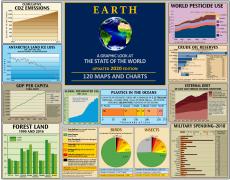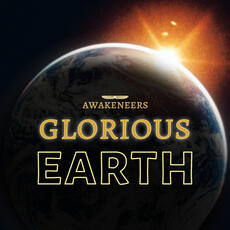Ocean
The essential data about ocean explained in 16 infographics. Detailed charts, maps and tables covering global sea surface temperature, terrestrial and ocean biomes, plastics in the ocean, marine debris decomposition and more. Learn the truth about ocean and how it relates to the state of the world on The Global Education Project website with un-biased facts from the most reliable sources.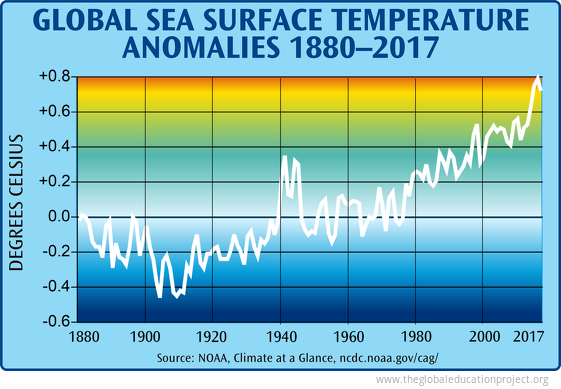 The ocean—the major heat, carbon and water reservoir of the world—is a crucial regulator of the Earth's climate. More than 93% of the enhanced atmospheric heating since the 1970s has been absorbed by the ocean, even affecting the deep ocean. The absorption...
The ocean—the major heat, carbon and water reservoir of the world—is a crucial regulator of the Earth's climate. More than 93% of the enhanced atmospheric heating since the 1970s has been absorbed by the ocean, even affecting the deep ocean. The absorption...
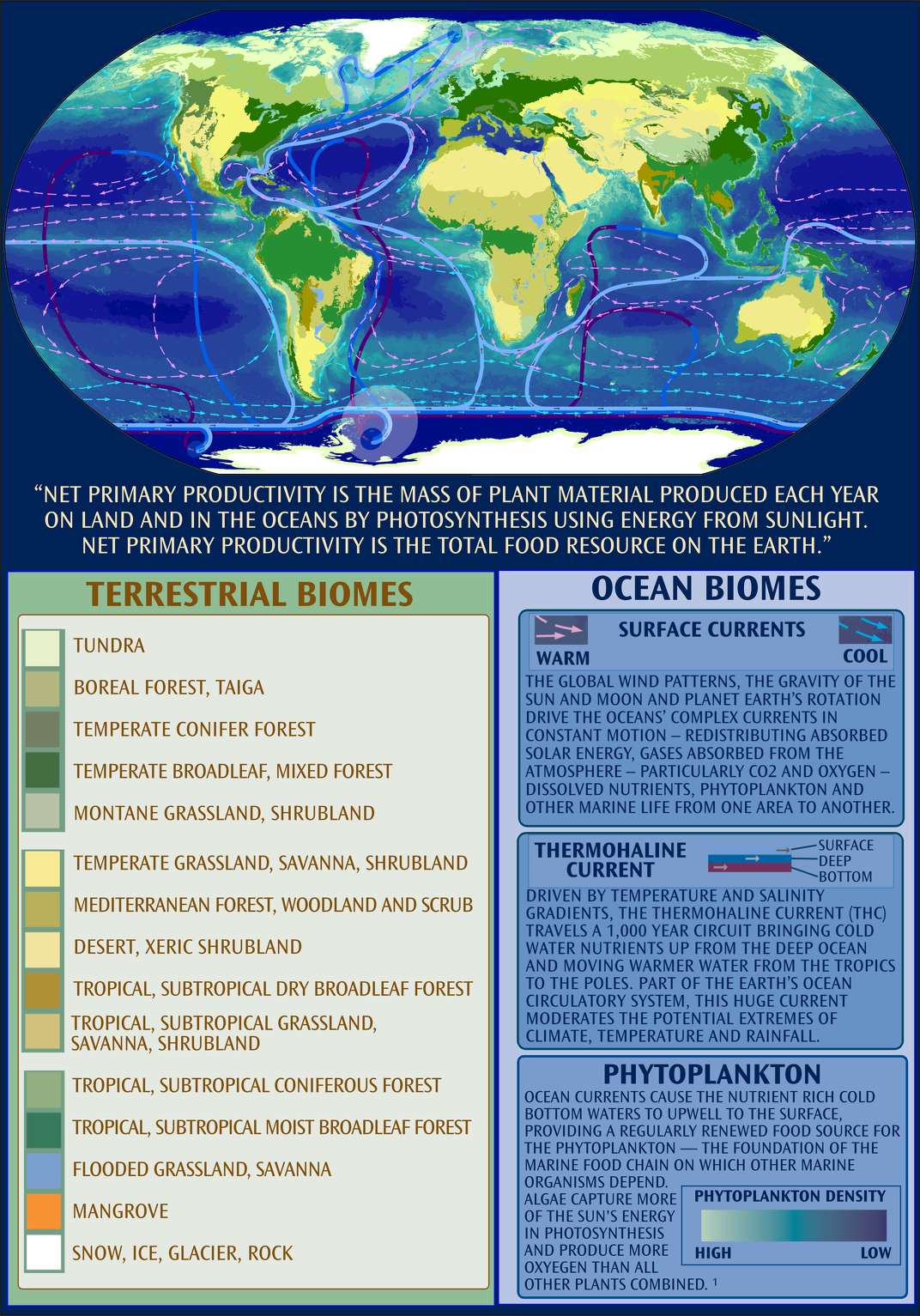 Evidence is growing that the thermohaline circulation, driven by temperature and salinity, could be slowed or stopped by cold fresh water inputs to the Arctic and North Atlantic oceans, diluting the salt concentration in the ocean. This could occur if...
Evidence is growing that the thermohaline circulation, driven by temperature and salinity, could be slowed or stopped by cold fresh water inputs to the Arctic and North Atlantic oceans, diluting the salt concentration in the ocean. This could occur if...
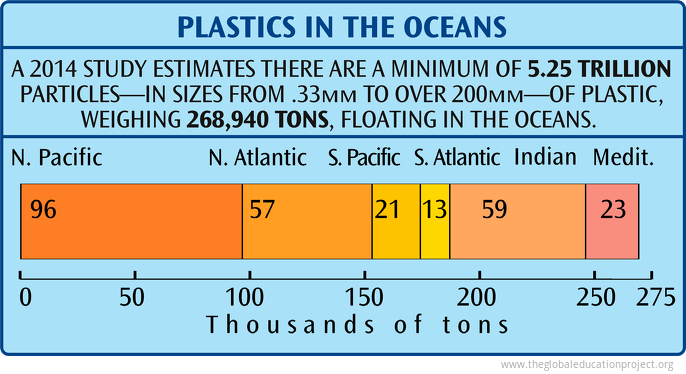 Rivers are a major pathway for plastic transport into the seas. Ten rivers: the Yangtze, Indus, Yellow, Hai He, Ganges, Pearl, Amur and Mekong in Asia; and the Nile and the Niger in Africa contribute about 90% of all river-driven plastics into the sea.
Rivers are a major pathway for plastic transport into the seas. Ten rivers: the Yangtze, Indus, Yellow, Hai He, Ganges, Pearl, Amur and Mekong in Asia; and the Nile and the Niger in Africa contribute about 90% of all river-driven plastics into the sea.
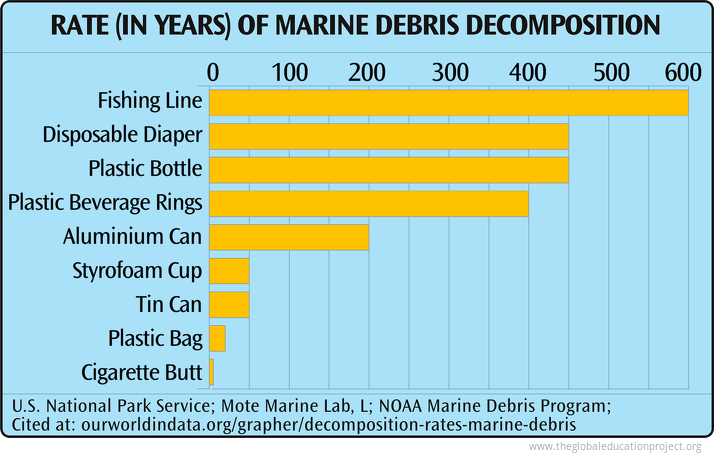
Historical and contemporary overview of greenhouse gas emissions and atmospheric concentrations—which countries emit the most CO2, total and per capita; methane; ocean warming and sea level rise; global temperature projections; glacier and ice loss.
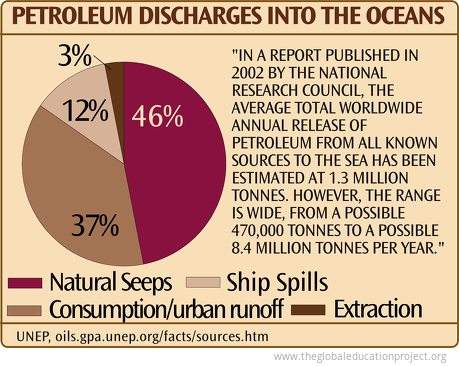
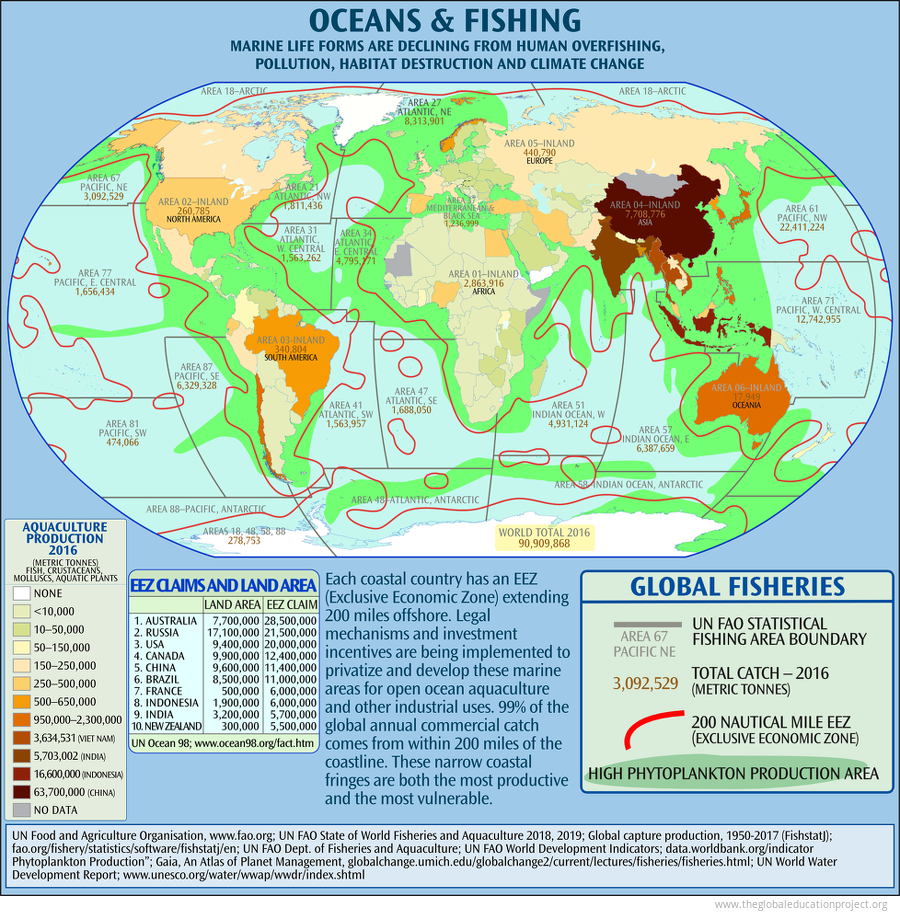 Each coastal country has an EEZ extending 200 miles offshore. “99% of the worldwide annual commercial ocean catch comes from coastal waters... these narrow coastal fringes are both the most productive and the most vulnerable.” Legal mechanisms and...
Each coastal country has an EEZ extending 200 miles offshore. “99% of the worldwide annual commercial ocean catch comes from coastal waters... these narrow coastal fringes are both the most productive and the most vulnerable.” Legal mechanisms and...
Fisheries and aquaculture; fish consumption and utilization; what countries claim as Exclusive Economic Zones (EEZs), and how heavily the world's fish stocks are being exploited; oil in the ocean; coral reefs.
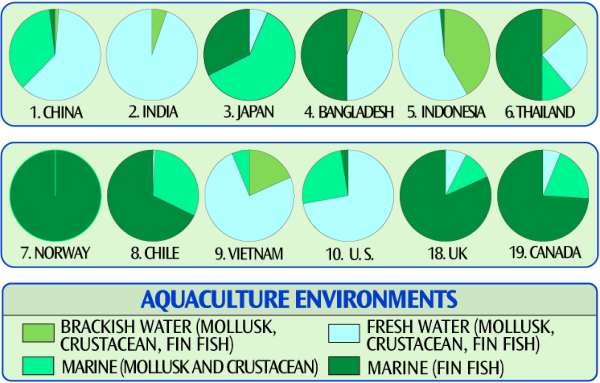 The high protein feed for farmed salmon is largely composed of ocean caught fish meal and meat offal from poultry and hog processing. Because of bio-accumulation of toxins in the feed, "consumption of farmed salmon even at relatively low frequencies results...
The high protein feed for farmed salmon is largely composed of ocean caught fish meal and meat offal from poultry and hog processing. Because of bio-accumulation of toxins in the feed, "consumption of farmed salmon even at relatively low frequencies results...
Population, pollution, greenhouse gases and deforestation are creating never before seen changes in Earth's living systems—including a cultural and species extinction rate that is the highest in the planet's history.
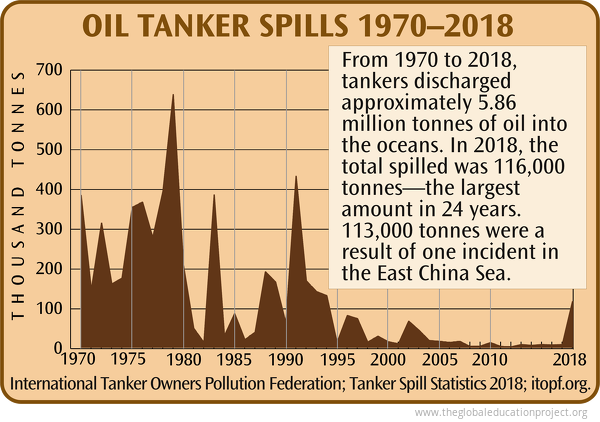
Industrialized civilization is dependent upon cheap and reliable fossil fuel energy. This section includes a look at production, consumption, remaining known resources and the global carbon budget.
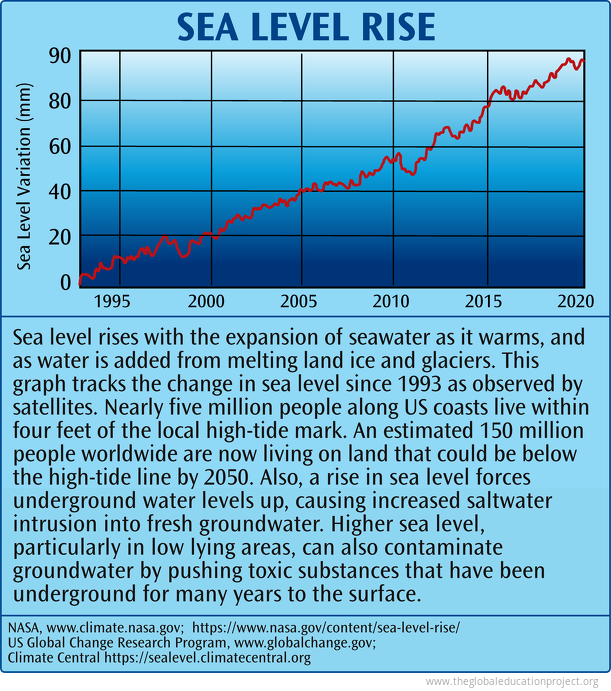
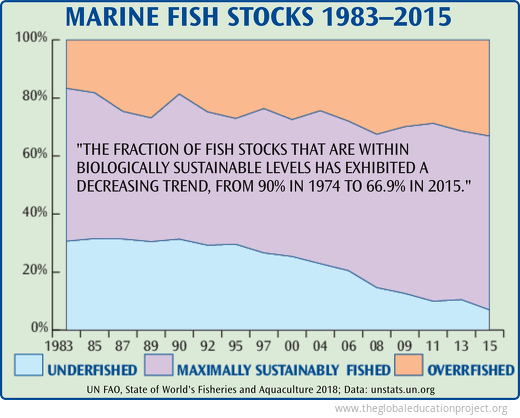
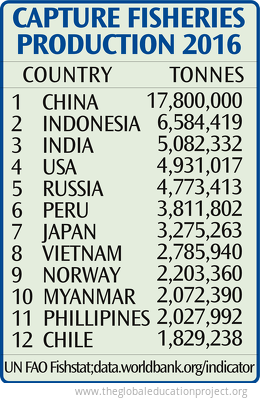
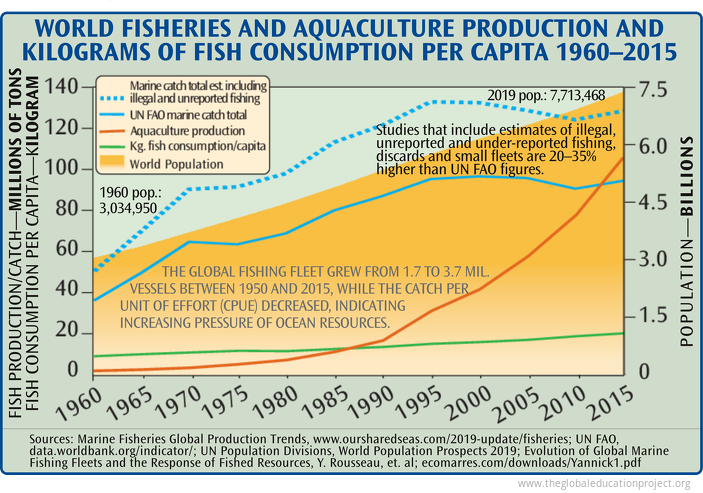
Page 1 of 1
Sign up for EARTH Dispatches
Enter you email below to get jaw dropping charts and maps delivered straight to your inbox.
Get the EARTH presentation
A 150 page high-resolution PDF containing all updated maps, charts and data on EARTH website; use as an information-packed educational slide show, printed booklet or a set of single-page handouts.
Learn More
